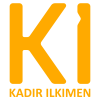Print Settings
Original prototype developed using PETG material and PETG recommended. Some other materials would work. Keep in mind that electronics, motors and hotend produce heat. Therefore the material you choose should be able to handle temperatures up to 80C.
It is recommended to use 0.4mm nozzle size and 0.2mm layer height for all the parts.
All the parts designed to have 0.2mm tolerance. 3D printing is not the most precise manufacturing method and also plastic is not the best material for precise dimensions, consider 0.2mm variation as good and 0.1mm great.
Recommended Print Settings
The values about the Strength/Surface are for reference to stress what is more important for the part. Because the printer you have, speed and filament all relative, You would use this value and your experience to figure out best speed and nozzle temp, cooling etc. Please note that, higher the surface quality means better precision.
- 100% : The strength of the part is the most important and we don’t need much surface quality/precision at all.
- 50% : Both strength and surface quality are important. We can’t get them both ( if you are a crazy pro super skilled 3D printer person, hats off ). Therefore we sacfrifice from both to get best compromise.
- 0% : The strength is not so important and we would prefer to get best surface quality.
For all printable parts
- Layer height : 0.2mm
- Line width : 0.4mm
- Wall count : min. 2
- Infill line width : 0.6mm
- Infill density : min. 10%
- Infill type : Cubic subdivision
- Print speed : under 100mm/s
- Strength/surface : 40%
100% solid parts
– Settings
– Parts
Z drive pulley
It is difficult to print GT2 pulley teeth with 0.4mm nozzle but not impossible. 0.2mm is best radius you can get with 0.4mm nozzle it creates more smooth teeth profile than actual GT2 profile. The settings below helps to get better GT2 profile. I printed the prototype with 0.4mm and so far works fine. If you have a chance, I recommend to print with a smaller nozzle.
– Settings
- 100% solid
- Layer height: 0.1mm
- Line width : 0.4mm or less
- Strength/surface : 50%
- Print speed : 75mm/s or less
– Parts
Structural parts
Printing parts with threads requires an extra attention. I recommend to print 3D printed nuts a little under-flow. It helps preventing over-tight threads. Consider printing the following parts a little underflow : Rotary-axis-bearing-lock-nut.stl, Rotary-axis-preload-nut.stl, Z-axis-belt-tensioner-nut.stl
– Settings
– Parts
- Extruder-body.stl
- Hotend-body.stl
- Main-body.stl
- Rotary-axis-bearing-lock-nut.stl
- Rotary-axis-bearing-spacer.stl
- Rotary-axis-motor-mount-nut.stl
- Rotary-axis-motor-mount-washer.stl
- Rotary-axis-motor-mount.stl
- Rotary-axis-preload-nut.stl
- Rotary-axis-rotor.stl
- Rotary-axis-tool.stl ( PLA recommended )
- Spool-supports.stl
- Tool-holder.stl
- X-axis-belt-clamps.stl
- X-axis-carriage.stl
- Z-axis-belt-tensioner-nut
- Z-axis-carriage.stl
- Z-drive-tensioner.stl
- Z-drive-top-support.stl
